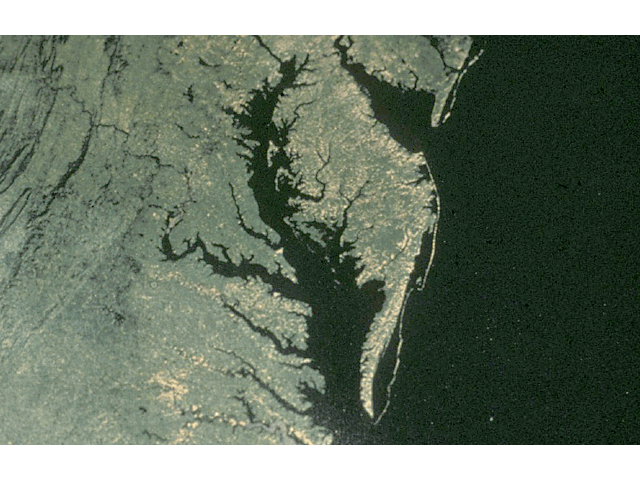OIG: EPA Needs to Regulate Bay Farms
EPA, Office of Inspector General at Odds Over Agency's Chesapeake Bay Authority
LINCOLN, Neb. (DTN) -- The Clean Water Act does not regulate nutrient runoff pollution from nonpoint sources such as farms -- a fact that puts the EPA's Office of Inspector General and the agency at odds when it comes to reducing runoff or nutrients into the Chesapeake Bay.
The OIG issued a scathing report this week, saying the Chesapeake Bay Program, which is a partnership between the EPA, state agencies and environmental groups, will not meet its goals of having all controls and practices in place by 2025 to meet its total maximum daily load, or TMDL, to reduce nutrients.
"The EPA has not updated its pollution-reduction strategy or led the Chesapeake Bay jurisdictions in updating the 2025 goals and pollutant-reduction deadlines," the OIG report said.
"While the EPA has assisted the program in achieving reductions for the portion of pollution covered by the TMDL that falls under the Clean Water Act regulatory authority, the EPA has not fully embraced its leadership role to steer the partnership toward addressing the most significant sources of remaining pollution covered by the TMDL, namely nonpoint-source pollution like excess nutrients."
A TMDL essentially is a pollution diet that requires various parties within a region to cut pollution runoff to help meet an overall nutrient-reduction goal.
As part of a recent legal settlement, however, EPA will be focusing nutrient-reduction efforts in Pennsylvania -- in particular in Lancaster, York, Bedford, Cumberland, Centre, Franklin and Lebanon counties.
EPA will be making determinations as to whether certain farms are significant contributors to nutrient runoff and would then consult with state officials about designating those farms as pollution point sources, https://www.dtnpf.com/….
States have the primary responsibility to regulate nonpoint-source pollution from farms and others.
P[L1] D[0x0] M[300x250] OOP[F] ADUNIT[] T[]
The OIG and the EPA are at odds about how far the agency can go in addressing nonpoint pollution sources in the bay.
The OIG said in the report the agency "has not yet led" program partners to adopt new goals or to update deadlines that would "more accurately reflect the time necessary to address the remaining sources of pollution covered by the TMDL."
The OIG made three recommendations to EPA and, in particular, to the EPA Region 3 office, that encompasses the bay states.
Those recommendations include leading the program to develop a new approach to nonpoint-source pollution; to set new jurisdictional goals and a new deadline to have pollution controls and practices in place; and to develop an "assurance mechanism" to hold bay states accountable for achieving nonpoint-source pollution reductions.
In response to the OIG report, the EPA agreed to just one of the three recommendations -- setting new deadlines.
According to the OIG, just one of the seven program partners -- the District of Columbia -- met all the TMDL pollutant-reduction goals in 2021 when it comes to nitrogen, phosphorus and sediment reductions. West Virginia met goals on two of the three pollutants, while Maryland and Virginia reached goals on one of three.
None of the nutrient-reduction goals were met in Delaware, New York and Pennsylvania.
In a written response to the report to the OIG, EPA Region 3 reiterated the importance of "cooperative federalism" within the Clean Water Act.
"We recommend that the OIG acknowledge limitations in EPA's Clean Water Act authority with respect to nonpoint sources," Region 3 said.
"The Clean Water Act's system of cooperative federalism gives states the primary authority over nonpoint sources. The Clean Water Act does not give EPA significant authority over nonpoint sources. Because of these limitations, the Chesapeake Bay jurisdictions have created and repeatedly updated watershed implementation plans and they continue to develop two-year milestones to evaluate and document project accomplishment."
Region 3 made several suggestions to the OIG to revise the report. In particular, the EPA said it believes it can lead the development of a "new strategy" to address nonpoint-source pollution through the Chesapeake Bay Program partnership.
Despite the suggested EPA revisions to the report, the OIG said it "did not accept" the recommendations, instead leaving two of the three unresolved.
"Therefore, we request that the EPA provide us within 60 days its responses concerning specific actions in process or alternative corrective actions proposed on the recommendations," the OIG said in a letter to EPA Region 3.
Read the OIG report here: https://www.epa.gov/….
Todd Neeley can be reached at todd.neeley@dtn.com
Follow him on Twitter @DTNeeley
(c) Copyright 2023 DTN, LLC. All rights reserved.



